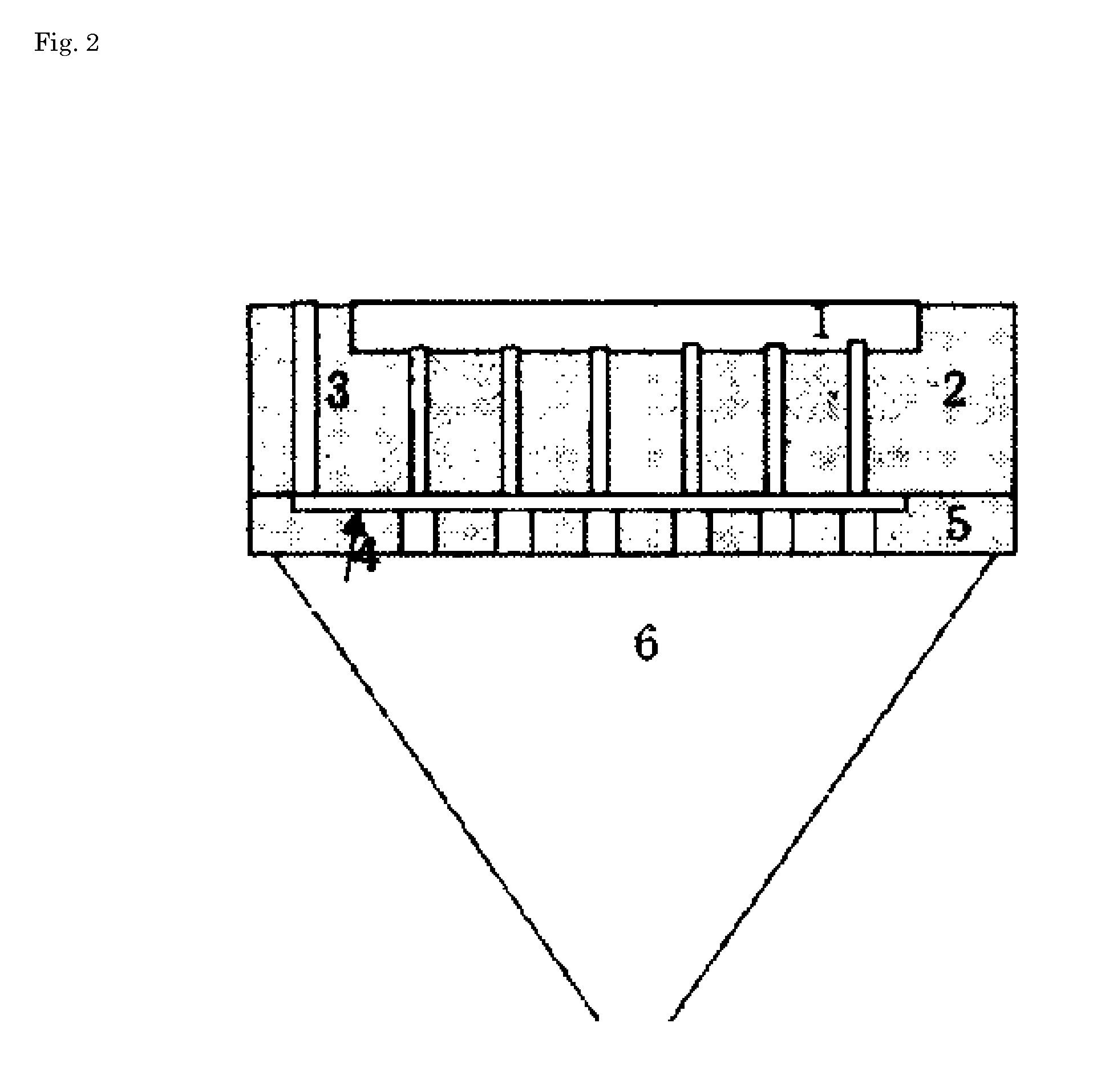Extra fine filament yarn containing deodorant functional agent and producing the same
a functional agent and filament yarn technology, applied in the field of extra fine multifilam, can solve the problems of affecting the deodorization effect of filament cloth, the disadvantage of hard texture of filament cloth per se, and the significant problem of treating bad odor, and achieve the effect of excellent deodorizing function and small deterioration of initial function
- Summary
- Abstract
- Description
- Claims
- Application Information
AI Technical Summary
Benefits of technology
Problems solved by technology
Method used
Image
Examples
example 1
[0052]A polyethylene terephthalate having an intrinsic viscosity of 0.64 (at 35° C., in orthochlorophenol) was used as a base polymer, 10% by weight of a masterbatch was chip-blended with the base polymer, and the resultant was melted at 285° C. by an extruder. The masterbatch was prepared using 10 parts by weight of a deodorant functional agent (a titanium oxide photocatalyst ST-01 available from Ishihara Sangyo Kaisha, Ltd.), which had an average secondary particle diameter of 1.2 μm measured by MICROTRACUPA (model 9340-TJPA150) manufactured by Nikkiso Co., Ltd.
[0053]A modified polyethylene terephthalate copolymerized with 4 wt % of a polyethylene glycol (PEG) having an average molecular weight of 4000 and a melt viscosity of 1600 poise at 285° C. and 8 mol % of 5-sodium sulfoisophthalate (SIP) as a sea component was melted by another extruder.
[0054]The photocatalyst-containing polyester was used as an island component, and each of the melted polymers were extruded at a sea / island...
example 2
[0056]Production and evaluation were carried out in the same manner as Example 1 except for changing the extrusion amount to prepare extra fine single yarn fibers having an average diameter of 385 nm. The results are shown in Table 1.
example 3
[0060]Production and evaluation were carried out in the same manner as Example 1 except that LIONITE PC available from Lion Corporation (average secondary particle diameter 3 μm) was used instead of the above photocatalyst and crushed into an average particle diameter of 1.9 μm using a jet mill manufactured by Seishin Enterprise Co., Ltd. (model STJ-200). The results are shown in Table 1.
PUM
| Property | Measurement | Unit |
|---|---|---|
| diameter | aaaaa | aaaaa |
| particle diameter | aaaaa | aaaaa |
| diameter | aaaaa | aaaaa |
Abstract
Description
Claims
Application Information
 Login to View More
Login to View More - R&D
- Intellectual Property
- Life Sciences
- Materials
- Tech Scout
- Unparalleled Data Quality
- Higher Quality Content
- 60% Fewer Hallucinations
Browse by: Latest US Patents, China's latest patents, Technical Efficacy Thesaurus, Application Domain, Technology Topic, Popular Technical Reports.
© 2025 PatSnap. All rights reserved.Legal|Privacy policy|Modern Slavery Act Transparency Statement|Sitemap|About US| Contact US: help@patsnap.com


